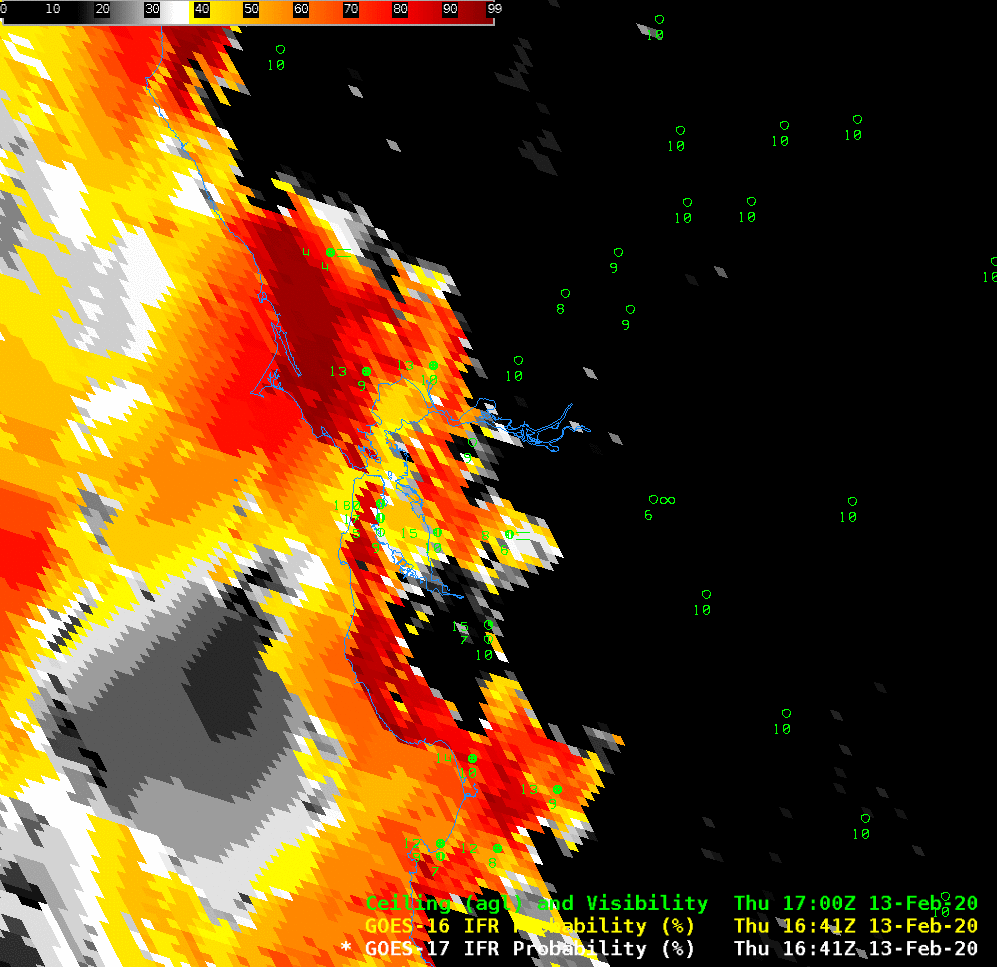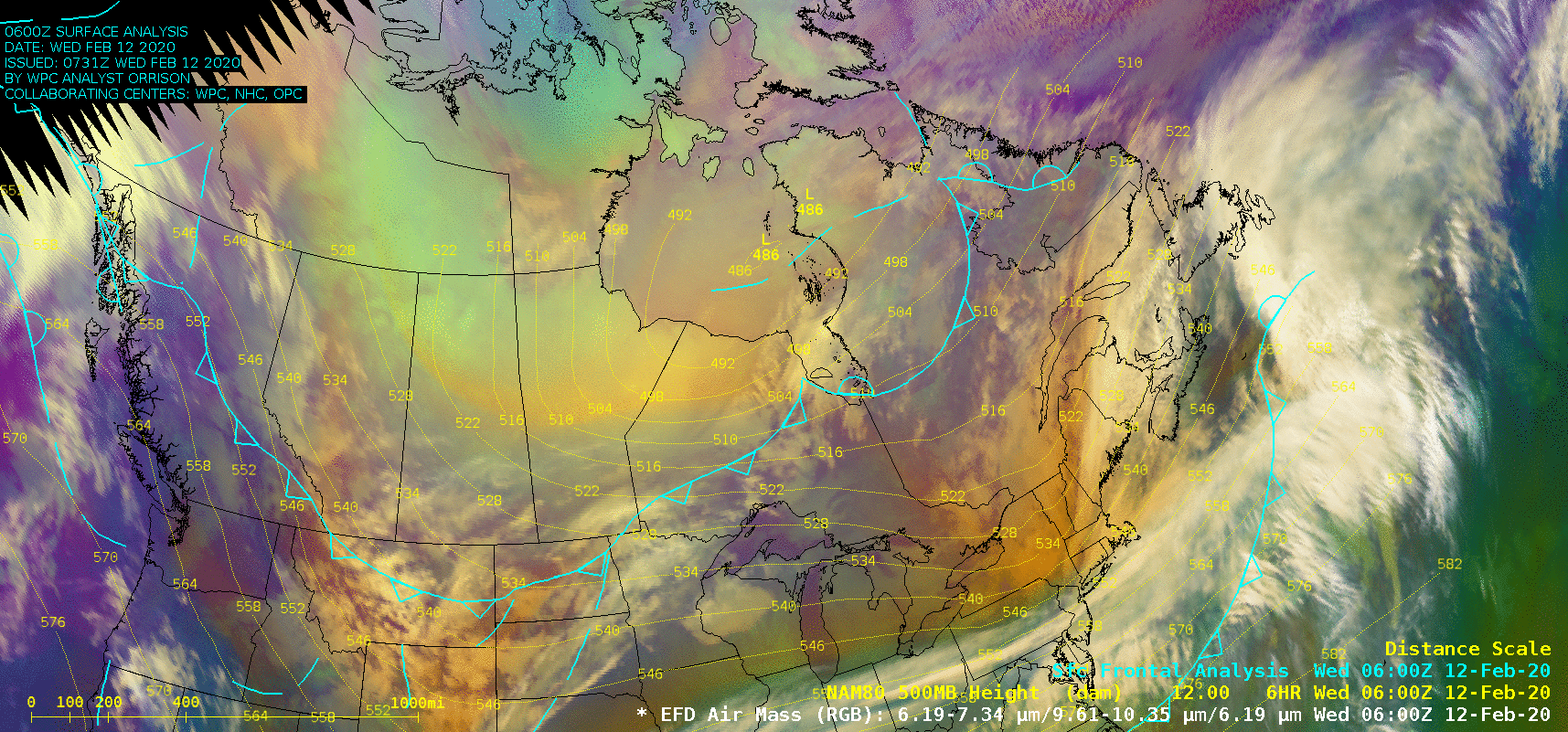
[ Archive ]

 |
CIMSS-NOAA Weekly Report [ Archive ] |
 |
ASPB AND CIMSS WEEKLY HIGHLIGHTS FOR THE WEEK ENDING FEBRUARY 14, 2020
IN THE PRESS:
SSEC and CIMSS Scientists in the News: Scientists at the University of Wisconsin-Madison (UW) Space Science and Engineering Center (SSEC) and the Cooperative Institute for Meteorological Satellite Studies (CIMSS) provide expert commentary, interviews, and imagery to news media and participate in events to promote science. In the news this week: 1) SSEC News is promoting the CIMSS-sponsored Verner E. Suomi Scholarship to high school seniors interested in studying atmospheric science or a related physical science at a UW System school. The deadline to apply is Apr. 15, 2020: https://www.ssec.wisc.edu/news/articles/11716. 2) CIMSS Satellite Blog contributors Scott Bachmeier and Scott Lindstrom published posts on the "Bore-like feature over lower Michigan" (Feb. 13), "GOES-17 IFR Probability Fields in Testing at CIMSS" (Feb. 13), "Can you use gridded NUCAPS fields to diagnose the rain/snow line?" (Feb. 13), "Ground blizzard in North Dakota and Minnesota" (Feb. 12), "Ozone Estimates from NUCAPS" (Feb. 11), and "Cyclone Damien makes landfall in Western Australia" (Feb. 8). Read more at the CIMSS Satellite Blog (https://cimss.ssec.wisc.edu/satellite-blog/). (S. Lindstrom, CIMSS, S. Bachmeier, CIMSS, J. Phillips, SSEC, 608-262-8164)
 (Click image to enlarge)
(Click image to enlarge)
Figure: Images from Feb. 13, 2020 over central California compare GOES-16 IFR Probability and GOES-17 IFR Probability for the same time period. GOES-17 IFR Probability fields are being evaluated at CIMSS with a plan to release them to the field via an LDM request in the near future. Credit: CIMSS.
 (Click image to enlarge)
(Click image to enlarge)
Figure: GOES-16 Air Mass RGB images displayed the characteristic pale yellow hues associated with cold arctic air moving southward behind a deep area of low pressure centered over Hudson Bay and northern Quebec, Canada on Feb. 12, 2020. Credit: CIMSS, NOAA.
ITEMS FOR THE ADMINISTRATOR:
ITEMS FOR THE ASSISTANT ADMINISTRATOR:
ITEMS FOR THE OFFICE DIRECTOR, STAR:
NOAA Partnership with Viking Cruises in the Great Lakes: NOAA has recently established a partnership with Viking Cruises for future scientific and outreach activities in the Great Lakes Region. Viking Cruises will launch regular Great Lakes cruise itineraries in 2022. These vessels will carry over 300 passengers and will also serve as valuable instrumented research platforms. NOAA scientists will accompany Great Lakes Viking Cruise excursions to monitor water quality, weather, and the Great Lakes ecosystem. NOAA scientists will also be invited to provide lectures about science themes unique to the Great Lakes during these excursions. The NOAA Great Lakes Regional Collaboration Team (GLRCT) is working with Viking Cruises to prioritize and plan research and monitoring projects that will be undertaken when cruises commence in 2022. Mark Kulie, STAR, is a member of the GLRCT. (M. Kulie, ERA/2, 608-263-6583, mark.kulie@noaa.gov)
Manuscript on ABI rapid-scan-based AMV assimilation in HWRF published: A manuscript titled "Impact of Rapid‐Scan‐Based Dynamical Information FromGOES‐16 on HWRF Hurricane Forecasts" has been published in Journal of Geophysical Research: Atmospheres. Studies show that assimilation of vortex‐scale rapid scan AMVs from ABI in the HWRF model results in consistent track prediction improvements for Hurricanes Harvey, Irma, and Maria, and improvements are mainly from better initialization of the wind fields in the vortex‐scale region and near environment. It indicates that through high spatiotemporal sampling of targeted tropical cyclones, the new generation of geostationary satellites provides important observational data for forecast improvement. Coauthors are Jinlong Li (CIMSS), Jun Li (CIMSS, corresponding author), Christopher Velden (CIMSS), Pei Wang (CIMSS), Timothy J. Schmit (STAR), and Jason Sippel (NHC). (Jun Li, CIMSS, Jun.Li@ssec.wisc.edu, 608-262-3755)
ITEMS FOR THE DIVISION CHIEF, CoRP:
Participation at the 4th Workshop on Assimilating Satellite Cloud and Precipitation Observations for NWP: Cooperative Institute for Meteorological Satellite Studies (CIMSS) scientist Jason Otkin attended the “4th Workshop on Assimilating Satellite Cloud and Precipitation Observations for NWP” held in Reading, UK from 03-06 February 2020. This workshop was jointly hosted by ECMWF and the Joint Center for Satellite Data Assimilation (JCSDA). It is held every 4-5 years and brings together experts on all-sky satellite data assimilation, forward radiative transfer modeling, numerical weather prediction, and data assimilation methods. Jason Otkin served as a panelist for the emerging observations discussion and also presented a poster describing results from a study that examined the benefits of using nonlinear bias corrections when assimilating all-sky infrared brightness temperatures. (J. Otkin, CIMSS, 608-265-2476)
Presentation for the NWS Alaska Region Climate Science & Services Workshop: Jeff Key gave a remote presentation at the NWS Alaska Region Climate Science & Services Workshop, February 12, 2020. His presentation was on Arctic climate applications using satellite data. He also described the Northern Hemisphere 2019-2020 winter snow cover, snow depth, and snow water equivalent relative to the multi-decadal mean. Mitch Goldberg, the JPSS program scientist, gave a presentation on JPSS and GOES-R products relevant to Alaska. (J. Key, E/RA2, 608-263-2605, jeff.key@noaa.gov)
Virtual Alaska Weather Symposium on NUCAPS: Scott Lindstrom, Cooperative Institute for Meteorological Satellite Studies (CIMSS), gave a 45-minute presentation on NOAA-Unique Combined Atmospheric Processing Systems (NUCAPS) Profiles, titled "How NUCAPS and Gridded NUCAPS Can Help You". The presentation was part of the ongoing Virtual Alaska Weather Symposium (VAWS) series. The presentation was to about 20 different listening groups, and it can be found at this website: https://uaf-accap.org/event/vaws-feb2020-nucaps/. (S. Lindstrom, CIMSS, 608 263 4425)
Paper Accepted In BAMS: The manuscript "Tropical widening: from global variations to regional impacts" has been accepted for publication in the Bulletin of the AMS (BAMS). The paper is the result of the efforts of the US CLIVAR Working Group on Tropical Widening. Jim Kossin (NCEI) is a member of the Working Group and a co-author on the paper. (J. Kossin, NCEI, 608-265-5356)
Telecon with the Japan Meteorological Agency (JMA): On February 13 (in the US), J. Li and T. Schmit participated in telecon with the Japan Meteorological Agency (JMA). The topic was an update on high-spectral resolution infrared geostationary sounder Observing System Simulation Experiments (OSSE). The presentation focused on the regional-scale hybrid OSSE study that is being conducted at Cooperative Institute for Meteorological Satellite Studies (CIMSS). A hybrid OSSE is when real observations are used for the control runs, while the experimental runs use simulated observations for the planned sensor, in this case the advanced geostationary sounder. Preliminary results show positive impacts on the storm-scale when assimilating high-spectral resolution infrared geostationary sounder observations, even with all the other observations. This call was part of a larger coordination meeting with JMA and on-site participants, such as Pam Sullivan, Director Geostationary Operational Environmental Satellites (GOES)-R and Dan Lindsey, GOES-R Senior Science Advisor. (T. Schmit, E/RA2, 608-263-0291, tim.j.schmit@noaa.gov; J. Li, CIMSS, 608-262-3755)
VISITORS:
NEXT WEEK:
LOOKING AHEAD:
| Archived Weeklies Page | Submit a report item |